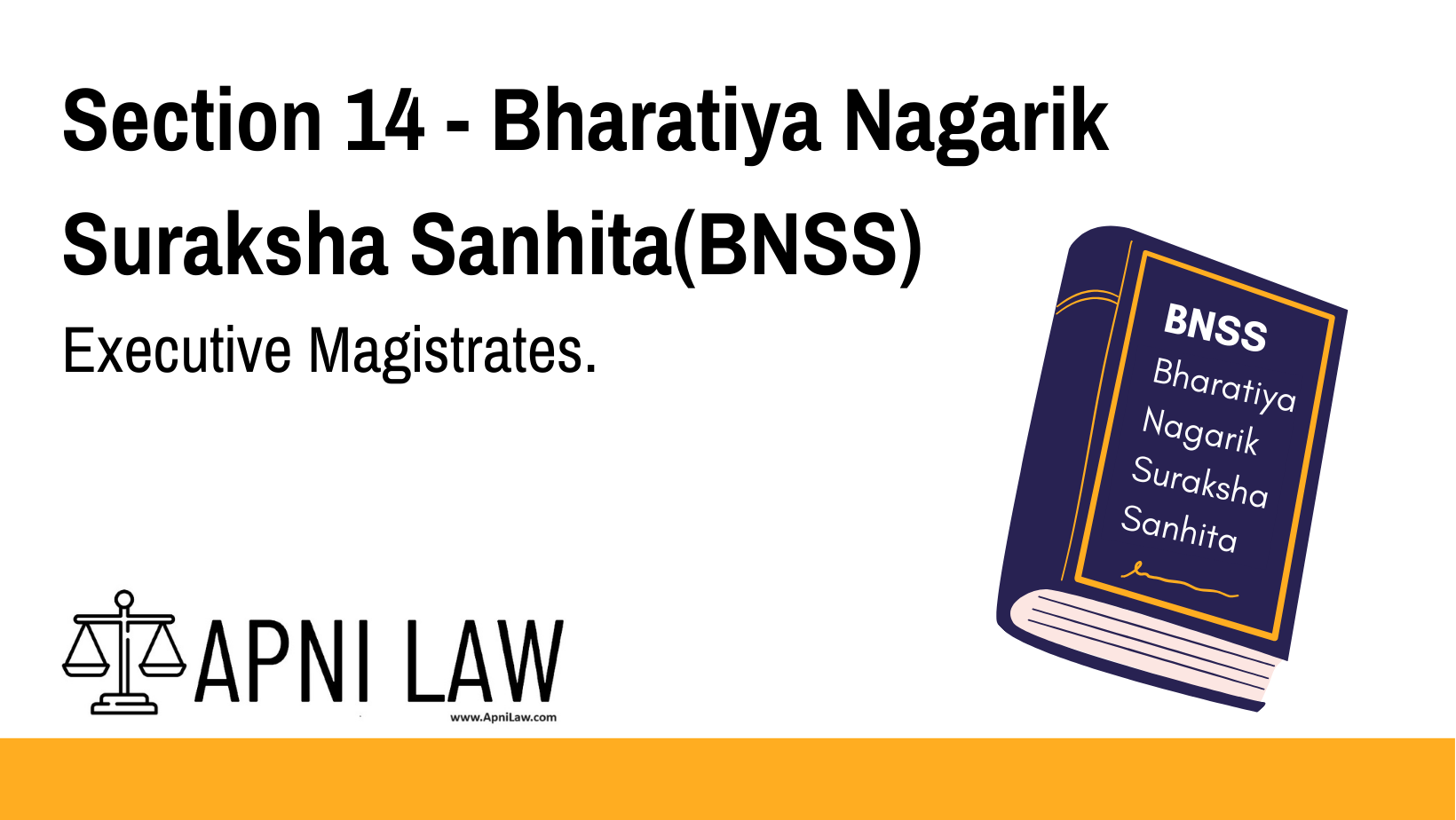BNSS Code 14: Executive Magistrates
Code
(1) In every district, the State Government may appoint as many persons as it thinks fit to be Executive Magistrates and shall appoint one of them to be the District Magistrate.
(2) The State Government may appoint any Executive Magistrate to be an Additional District Magistrate, and such Magistrate shall have such of the powers of a District Magistrate under this Sanhita or under any other law for the time being in force as may be directed by the State Government.
(3) Whenever, in consequence of the office of a District Magistrate becoming vacant, any officer succeeds temporarily to the executive administration of the district, such officer shall, pending the orders of the State Government, exercise all the powers and perform all the duties respectively conferred and imposed by this Sanhita on the District Magistrate.
(4) The State Government may place an Executive Magistrate in charge of a sub-division and may relieve him of the charge as occasion requires; and the Magistrate so placed in charge of a sub-division shall be called the Sub-divisional Magistrate.
(5) The State Government may, by general or special order and subject to such control and directions as it may deem fit to impose, delegate its powers under sub-section (4) to the District Magistrate.
(6) Nothing in this section shall preclude the State Government from conferring, under any law for the time being in force, on a Commissioner of Police all or any of the powers of an Executive Magistrate.
Explanation of Section 14 BNSS
Section 14 of the Bharatiya Nyaya Sanhita (BNSS) governs the appointment and powers of Executive Magistrates within a district. It grants the State Government the authority to appoint Executive Magistrates, including the appointment of a District Magistrate. The section also provides for the creation of Additional District Magistrates who possess powers granted by the State Government. It outlines the procedures for succession when the office of the District Magistrate becomes vacant and specifies the delegation of authority to Sub-divisional Magistrates.
Furthermore, the section allows for the State Government to delegate powers to the District Magistrate and permits the conferring of certain Executive Magistrate powers to a Commissioner of Police.
Illustration
Example 1: Appointment of District Magistrate
The State Government appoints a senior Executive Magistrate as the District Magistrate of a district, granting them the necessary powers and responsibilities for maintaining law and order within that district.
Example 2: Appointment of Additional District Magistrate
The State Government appoints an Additional District Magistrate to assist the District Magistrate in overseeing administrative functions, with delegated powers to act on behalf of the District Magistrate in specific matters.
Example 3: Succession to District Magistrate’s Office
In the event the position of District Magistrate is temporarily vacant, an appointed officer will take over the duties of the District Magistrate and exercise all powers until the State Government appoints a permanent replacement.
Example 4: Delegation of Powers to Sub-divisional Magistrate
The State Government places an Executive Magistrate in charge of a sub-division and names them the Sub-divisional Magistrate, who will oversee the law enforcement and administrative tasks within that sub-division.
Example 5: Conferring Powers to Commissioner of Police
The State Government confers certain Executive Magistrate powers to the Commissioner of Police in accordance with other existing laws to enhance law enforcement in urban areas.
Common Questions and Answers on Section 14 BNSS
1. Who appoints the District Magistrate in each district?
- Answer: The State Government appoints the District Magistrate from the pool of Executive Magistrates.
2. Can an Executive Magistrate be appointed as an Additional District Magistrate?
- Answer: Yes, the State Government has the authority to appoint any Executive Magistrate as an Additional District Magistrate, conferring upon them the necessary powers as specified by the government.
3. What happens if the office of District Magistrate becomes vacant?
- Answer: When the office of District Magistrate becomes vacant, an officer is appointed to temporarily assume the executive responsibilities of the District Magistrate until a permanent appointment is made by the State Government.
4. What is a Sub-divisional Magistrate?
- Answer: A Sub-divisional Magistrate is an Executive Magistrate placed in charge of a sub-division within a district, tasked with overseeing administrative and law enforcement functions in that area.
5. Can the State Government delegate powers of an Executive Magistrate?
- Answer: Yes, the State Government can delegate the powers of an Executive Magistrate to the District Magistrate, as well as confer some of these powers on the Commissioner of Police under applicable laws.
Conclusion
Section 14 of the BNSS establishes the framework for the appointment and delegation of powers to Executive Magistrates. It ensures the State Government maintains control over judicial and administrative functions within a district, while providing flexibility through the creation of Additional District Magistrates, Sub-divisional Magistrates, and temporary succession arrangements in case of vacancies. The section also allows for specific powers to be delegated to other officers, such as the Commissioner of Police, to enhance law enforcement capabilities.










